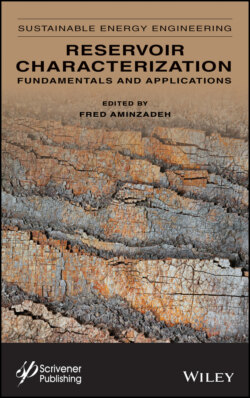Читать книгу Reservoir Characterization - Группа авторов - Страница 45
3.2 Anomaly Detection Methodology
ОглавлениеThe geologic anomaly detection methodology developed and tested in this paper relies on the use of a single-class training set that includes a fixed number of multidimensional records Y=(yk, 1, yk, 2 , …, yk, M). We constructed anomaly detection classifiers (AD classifiers) in such a way that they tend to have two main properties: (a) smaller values for the records within the training set and the records outside the training set that are of the same type as the training set records, (b) larger values for anomalous records outside the training set. AD classifiers are constructed as functions of one or several petrophysical parameters recorded at the location that is to be checked for anomaly status:
(3.1)
The anomaly identification rule is constructed as follows:
Record Yk is classified as regular if
(3.2)
If AD(Yk) > anomaly detection cuttoff, then record Υ is classified as anomalous. The anomaly cutoff is defined by the expected false discovery rate (expFD):
(3.3)
N(AD(Yk) > anomaly cuttoff; Yk ⊂ TrainSet) is the number of records in the training set with values of anomaly detection classifier exceeding cutoff, K is total number of records in the training set.
For construction of anomaly detection classifiers we selected parameters based on results of dissimilarity analysis (Katz et al., [8]). These parameters are Vp/Vs and Poisson’s Ratio.
